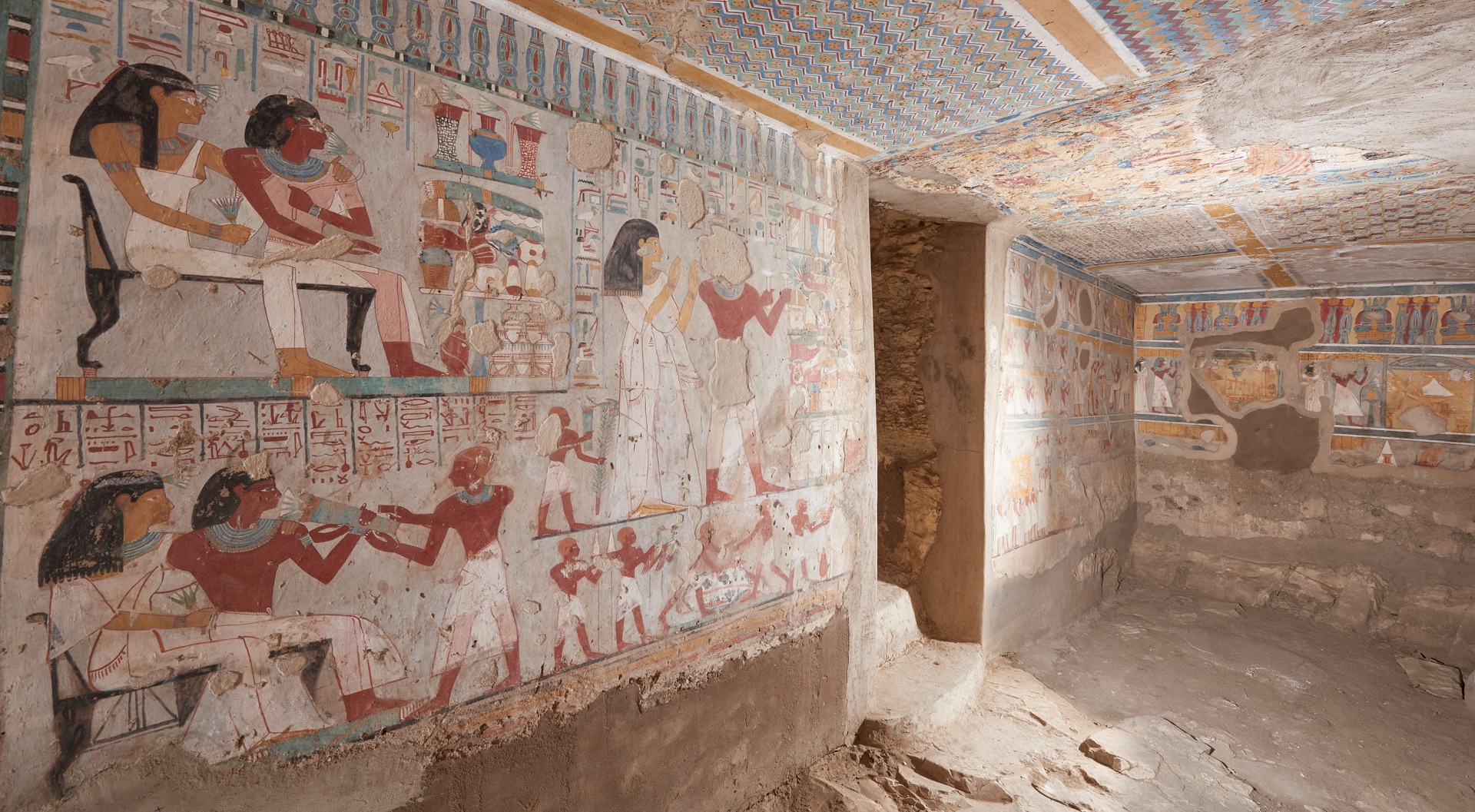The Leiden University Mission to the Theban Necropolis, TT45 Project, Luxor West Bank
Mission Director: Dr. Carina van den Hoven
Funded by: Gerda Henkel Stiftung
The Leiden University Mission to the Theban Necropolis started in 2017 under the direction of Dr. Carina van den Hoven and aims to carry out conservation, documentation, publication, archaeological study, art historical analysis, heritage preservation and site management activities in Theban Tomb 45 in Sheikh Abd el-Qurna on the West Bank of Luxor. The acquired data will be documented and published using the most recent tools and developments in the field of Digital Humanities, including photogrammetry, 3D-technology, digital epigraphy, digital reconstruction, and digital imaging technology. As such, this project aims to contribute significantly to the development and application of non-invasive digital technologies to Egyptological site documentation and publication. The project also provides opportunities for further training of Egyptian personnel in conservation, site documentation and archaeological research.
Theban Tomb 45 is a fascinating case of tomb reuse: the tomb was built and partly decorated with painted scenes and texts in the 18th dynasty (Amenhotep II, ca. 1400 BCE) for a man named Djehuty and his family. Djehuty was charged with overseeing the household of Mery, the high priest of Amun (the owner of Theban Tomb 95) as well as with overseeing the weaving workshop that was attached to the temple of Karnak. Several hundred years later, in the Ramesside period, the tomb was reused by a man called Djehutyemheb. Like his predecessor, he was overseer of the weaving workshop at Karnak. Even though the practice of tomb reuse calls to mind images of usurpation, tomb robbery and destruction, this particular tomb was reused in a non-destructive manner, with consideration for the memory of the original tomb owner. Instead of vandalizing an earlier tomb and whitewashing its walls in order to replace the original decoration with his own, the second tomb owner left most of the existing decoration in its original state. He added his own decoration only to wall sections that had been left undecorated by the original tomb owner. He also retouched a number of the original paintings. For example, he altered the garments, wigs and furniture depicted on the tomb walls, in order to update them to contemporary style. [For photographs, see the project website www.StichtingAEL.nl].
The double occupation of Theban Tomb 45 and the way in which the second occupant dealt with the original decoration make it an excellent starting point for a research project on the mechanisms and motives behind tomb reuse in New Kingdom Egypt, carried out by Dr. Carina van den Hoven at the Netherlands Institute for the Near East, Leiden University. Tomb reuse was a widespread mortuary practice in Ancient Egypt. Consequently, much information is available in terms of archaeological data. However, there is a surprising lack of academic research on this topic. Traditionally, studies of burial monuments have mainly been concerned with their original construction and decoration, and with their original tomb owner(s). The continued use and reuse of tombs has long been of marginal interest to researchers. This is indeed surprising, because the continued use of monuments forms part of their 'life history'. Another problem in the study of tomb reuse is that the phenomenon is generally documented only as part of the life histories of individual tombs, i.e. detached from its wider historical, cultural, and geographic context. Dr. Van den Hoven’s research project takes a new approach and explores tomb reuse in terms of the theoretical concepts of ‘space’ and ‘memory’. This approach will enable her to go beyond the investigation of apparent motives associated with individual cases of tomb reuse, and to present an innovative understanding of the collective way in which the Ancient Egyptians used and interacted with the landscape and its monuments in order to connect with their own past and ancestors. This new approach opens the way for cross-cultural comparison of the ways in which societies regard the dead and their own past, an important aspect of the wider phenomenon of cultural identity that is still relevant today. The fieldwork project in Theban Tomb 45 forms the starting point for this research project, but the evidence will be contextualized within the wider mortuary landscape of the Theban necropolis.
Please visit the project website for more information on Theban Tomb 45 and on how you can help us in preserving Egypt’s heritage for future generations. The project website is hosted and maintained by the Luxor Archaeological Heritage Foundation, a non-profit organization aimed at providing financial support for the TT45 Project.

